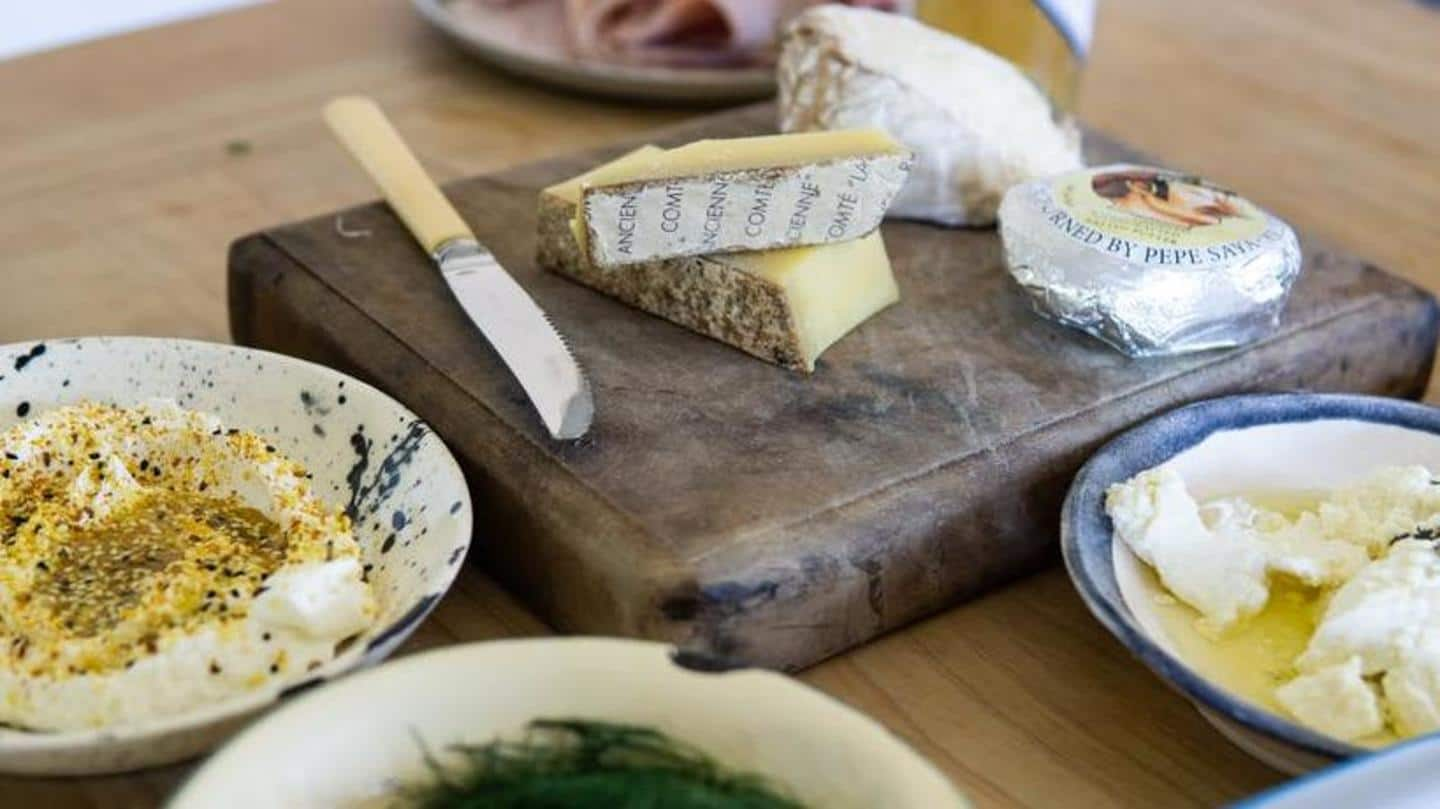
5 lesser known varieties of cheese you must try
What's the story
If you're one of those who always ask for an extra serving of cheese, today is your day!
Before you rush to deck up your Charcuterie board, think of how many cheese varieties you are aware of. Can you count them yet?
On this National Cheese Day, let's check out five amazing yet lesser-known varieties of cheese that you must try in this lifetime.
#1
Gjetost
Gjetost is a very unique Scandinavian cheese.
It is mostly eaten as a dessert cheese or sliced and on toast for breakfast. Gjetost also pairs well with coffee.
This Norwegian cheese is either made from goat's milk or with a blend of both goat and cow milk.
Since it is made by slowly heating whey, milk, and cream, it is also called whey cheese.
#2
Irish Porter cheddar
Irish Porter is made by separating the curds and whey using vegetable rennet.
This gourmet cheese is tangy, full, and chocolaty to taste with a pungent finish as it is brown waxed.
This dense cheese offers the strong flavors of aged cheddar and Irish beer.
Made with pasteurized cow milk, the cheese has a beautiful cream and is brown marbled inside.
#3
Mimolette
Mimolette is a semi-hard orange cheese from France.
Made from cow milk, it is originally produced in the Lille region of France, and so it's also called Boule de Lille.
This complex flavored cheese goes very well with wines and savory dishes.
Mimolette is eaten at different stages of aging.
When young, its tastes like Parmesan. When it's "extra-old" it tastes like hazelnut.
#4
Monte Enebro
Monte Enebro is a soft goat cheese from Spain. It has a distinct blue-gray coating on the outside of the cheese.
It is made from pasteurized goat milk and can be eaten both young and aged.
This cheese is brittle and white when young, but develops a creamier and lemony taste when it ages.
It pairs really well with sweet wines.
#5
Wensleydale cheese
Wensleydale cheese is made from cow milk and sold at only three weeks old.
The cheese has a sweet fruity flavor of sweet fruits like cranberries or apples with deep honey notes.
It is named after the region in North Yorkshire in England where it originated.
This supple and crumbly cheese is often cherished with apple pies and Christmas cakes.